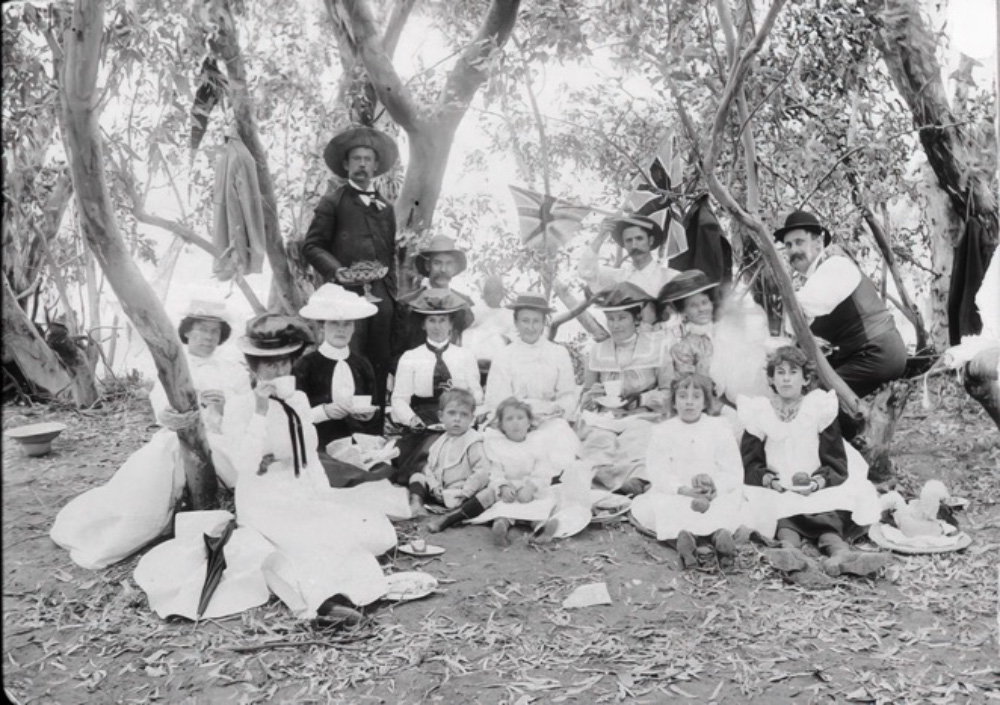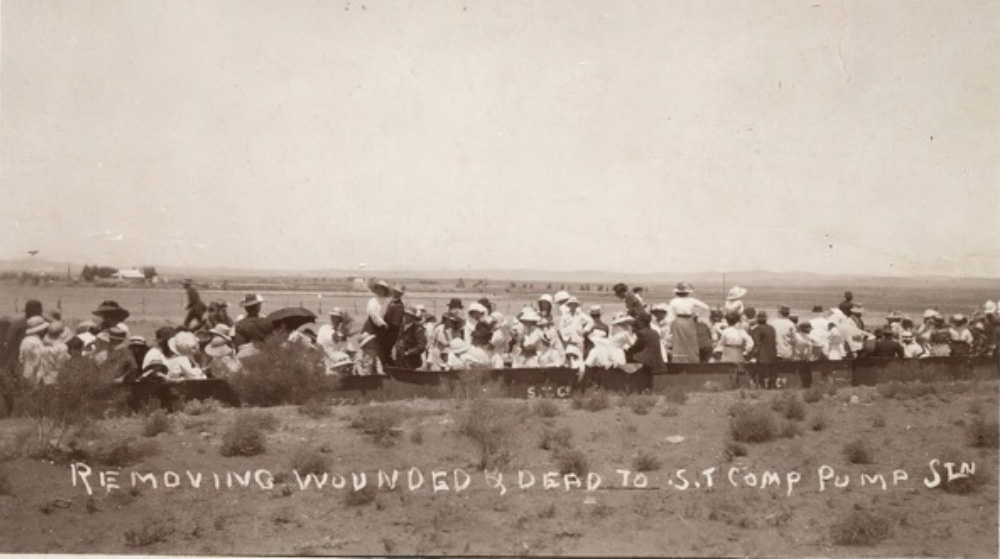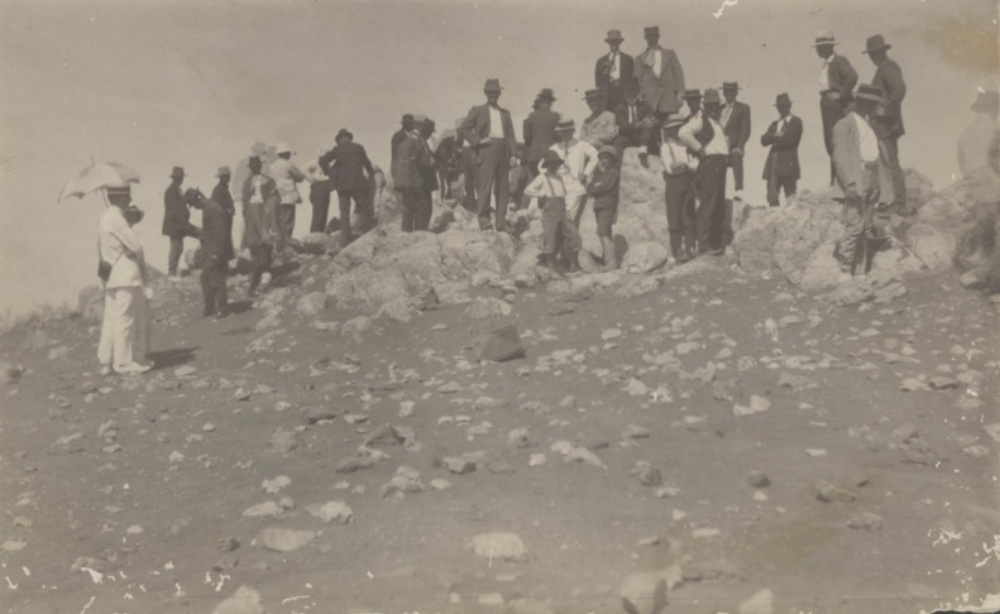On Easter Monday, a party of young men and women enjoy a picnic at Silverton. When the mines and sulphurous smelters of Broken Hill denuded the nearby hills of trees, the Silverton Tramway Company delivered day-trippers to the shady creeks at Penrose Park, Silverton and McCulloch Park, Tarrawingie. Little did these revellers imagine the stormy year which lay ahead for the families and miners working on the Broken Hill line of load.
The original Picnic photograph, was described as ‘At the Rechabites’ Picnic’1. The Rechabites Lodge was a Friendly Society offering members assistance in times of hardship and illness and promoting total abstinence from alcohol. There were thirty seven Friendly Societies and Lodges operating in Broken Hill in 19082. These included the Manchester Unity Independent Order of Oddfellows. An accident had occurred at the MUIO picnic the year before this photograph was taken, when a young boy named Alick Pengelley wandered away and drowned in a nearby dam3. It was not the last time a Manchester Unity picnic would be marred by tragedy.



On New Year’s Day, 1915, the Manchester Unity picnic train was the target of the first foreign attack on Australian soil during World War 1. Two disaffected men, Gool Mahomed and Mullah Abdullah, fired upon the open picnic carriages on the outskirts of Broken Hill. Seven people were wounded and six were killed including the two gunmen. Documents found at the site of the final shoot-out included Gool Mahomed’s application to enlist in the Turkish Army and a note in Urdu stating, ‘I kill your people because your people are fighting my country.’4

Learn more about this part of Broken Hill History at Sulphide St Museum etc. REFER TO SULPHIDE ST RAILWAY ETC Outback Museum Stories.
- Stokes, E. (1983) United we stand: Impressions of Broken Hill 1908-1910, Sydney: Five Mile Press. p.178
- Curtis, L.S. (1908) The History of Broken Hill: Its rise and progress, Adelaide: Frearson’s Printing. p.183
- Kearns, R.H.B (1993) Broken Hill 1894 – 1914: The uncertain years, Adelaide: Open Book. p. 42
- Kearns, R.H.B (1975) Broken Hill 1915-1939: New horizons, Broken Hill: Broken Hill Historical Society.pp.4-7
